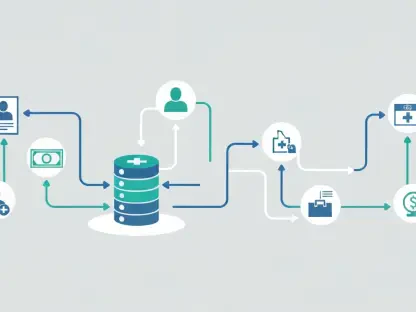The landscape of cloud security has undergone significant transformations, driven by continuous technological advancements and the growing sophistication of cyber threats. As businesses increasingly embrace cloud computing, safeguarding sensitive data has become paramount. This article explores key cloud security best practices and AWS-specific measures essential for protecting data in the current environment.
Advanced Encryption and Data Privacy
Quantum-Resistant Techniques and Homomorphic Encryption
One of the most critical components of cloud security is data encryption. Enhanced encryption technologies now incorporate quantum-resistant techniques, which are designed to withstand potential decryption by quantum computers. Additionally, homomorphic encryption enables operations on encrypted data without the need for decryption, thus preserving data confidentiality throughout its lifecycle. These advancements are crucial as they significantly reduce the risk of sensitive information being compromised.
AWS plays a pivotal role in supporting these encryption advancements. Services like AWS Key Management Service (KMS) allow for the secure management of encryption keys across diverse cloud environments. AWS KMS provides robust key management infrastructure, ensuring that encryption keys are protected and accessible only to authorized users. This integration not only aids in maintaining data privacy but also simplifies encryption key management, thereby enhancing overall security.
Secure Management of Encryption Keys
In practice, managing encryption keys securely is a complex yet essential task. To address this complexity, AWS offers comprehensive key management services that automate and streamline key administration. The AWS Key Management Service enables users to create, manage, and retire encryption keys as needed. It also integrates seamlessly with other AWS services, providing consistent security across the entire cloud infrastructure.
Moreover, AWS KMS offers fine-grained access controls and auditing capabilities. These features allow organizations to enforce strict access policies, ensuring that only authorized personnel can manage encryption keys. Regular audits and detailed logging of key management activities help in maintaining compliance with regulatory requirements and provide transparency in key management operations. By implementing these measures, businesses can uphold the integrity and confidentiality of their data.
Cloud Security Posture Management (CSPM)
Continuous Monitoring of Cloud Configurations
Cloud Security Posture Management (CSPM) tools are indispensable in preventing misconfigurations and vulnerabilities in cloud environments. Continuous monitoring of cloud configurations is essential to ensure that security standards are consistently met, and risks are promptly addressed. CSPM solutions use automated security controls to detect and mitigate potential security gaps. AWS provides robust services like AWS Config and AWS Security Hub, which form the backbone of an effective CSPM strategy.
AWS Config enables organizations to assess, audit, and evaluate the configurations of AWS resources continuously. By providing a detailed view of configuration changes and compliance status, AWS Config helps maintain a secure cloud environment. AWS Security Hub further enhances CSPM by aggregating security findings from across AWS services and third-party tools, offering a centralized view of security and compliance status. This holistic approach ensures that security posture is managed efficiently and effectively.
Reducing Human Error with Automation
Human error is often a significant factor in security breaches and misconfigurations. To mitigate this risk, automation is key in maintaining a secure cloud environment. AWS provides automated tools that reduce the dependency on manual processes, thereby minimizing the potential for human error. AWS Config rules can be configured to automatically enforce security best practices, ensuring that any deviations are promptly identified and corrected.
Additionally, AWS Security Hub offers automated compliance checks against industry standards and regulatory requirements. These automated checks help organizations stay compliant by continuously monitoring cloud resources and providing actionable insights. By leveraging automation, businesses can enhance their security posture and reduce the likelihood of security incidents caused by human error. This approach not only streamlines security operations but also ensures a more robust and resilient cloud environment.
Incident Response and Threat Detection
Structured Approach Using AWS APIs and Logging Mechanisms
A well-defined incident response strategy is vital for addressing security breaches promptly and effectively. AWS provides an array of tools and services that facilitate structured incident response. Using AWS APIs and logging mechanisms such as CloudTrail and GuardDuty, organizations can gain valuable insights into suspicious activities and potential security incidents. These tools enable the collection, storage, and analysis of detailed logs, which are critical for identifying the root cause of security breaches.
CloudTrail records all AWS API calls, providing a comprehensive history of account activity. This log data is invaluable for forensic analysis and helps in tracing the actions leading up to a security incident. GuardDuty, on the other hand, offers continuous monitoring for malicious or unauthorized behavior. By analyzing data from multiple AWS sources, GuardDuty identifies potential threats and provides actionable alerts, enabling swift response to security incidents.
Continuous Threat Monitoring and Detection
Continuous threat monitoring is crucial for maintaining cloud security. AWS CloudWatch and Amazon Macie are essential tools for achieving this goal. AWS CloudWatch provides real-time monitoring of AWS resources and applications, ensuring that any anomalies or performance issues are promptly detected. By setting up custom alarms and metrics, organizations can proactively respond to potential threats and mitigate risks before they escalate.
Amazon Macie focuses specifically on data security and privacy. It uses machine learning to automatically discover, classify, and protect sensitive data stored in AWS. Macie continuously monitors data access patterns and alerts organizations to any unusual activity. This proactive approach helps in identifying potential data breaches early and taking necessary actions to prevent data exfiltration. By integrating continuous monitoring tools, businesses can maintain a vigilant stance against emerging threats and ensure the security of their cloud environments.
Multi-Factor Authentication and Identity Management
Role of AWS Identity and Access Management
Securing access to cloud resources is paramount, and Multi-Factor Authentication (MFA) plays a crucial role in this regard. AWS Identity and Access Management (IAM) allows organizations to define user roles and apply the principle of least privilege, ensuring that users have only the permissions necessary for their tasks. IAM supports MFA enforcement, adding an extra layer of security by requiring users to provide additional verification beyond their passwords.
IAM provides fine-grained access control, enabling organizations to manage user permissions with precision. By leveraging IAM policies, businesses can enforce strict access controls and ensure that sensitive data is accessible only to authorized users. Additionally, IAM integrates with other AWS services, providing a unified approach to identity management across the AWS ecosystem. This integration enhances security and streamlines the process of managing user identities.
Biometric Authentication Methods
Biometric authentication methods are becoming increasingly common as a means of securing cloud accounts. These methods leverage unique physiological characteristics, such as fingerprints or facial recognition, to verify user identities. The adoption of biometric authentication adds an additional layer of security, making it significantly harder for unauthorized individuals to gain access to cloud resources.
AWS supports the integration of biometric authentication methods through its IAM service. Organizations can implement biometric authentication as part of their MFA strategy, ensuring that only verified users can access critical resources. This approach not only enhances security but also improves the user experience by providing a convenient and efficient authentication process. As cyber threats continue to evolve, the adoption of advanced authentication methods is essential for maintaining robust cloud security.
Compliance and Continuous Monitoring
Compliance Frameworks and AWS Tools
Compliance with regulatory requirements is a critical aspect of cloud security. AWS provides a comprehensive suite of tools and frameworks designed to help organizations achieve and maintain compliance. AWS Artifact offers on-demand access to AWS compliance reports and select online agreements, simplifying the process of demonstrating compliance to auditors and regulatory bodies.
AWS provides pre-configured compliance frameworks, allowing organizations to align their cloud environments with industry standards and regulations. These frameworks cover a wide range of compliance requirements, including GDPR, CCPA, and HIPAA, ensuring that businesses can adhere to the necessary regulatory standards. By utilizing AWS compliance tools, organizations can streamline their compliance processes and focus on their core business operations.
Real-Time Alerts and Compliance Violations
Continuous monitoring is essential for maintaining compliance and identifying potential risks. AWS GuardDuty and AWS Security Hub offer real-time alerts and insights into compliance violations. GuardDuty continuously monitors AWS accounts for malicious activity and unauthorized behavior, providing actionable alerts to address security threats. This continuous surveillance helps organizations stay ahead of potential risks and maintain a secure cloud environment.
AWS Security Hub aggregates compliance findings from across AWS services and third-party tools, offering a centralized view of security and compliance status. This centralized approach enables organizations to manage compliance effectively and respond swiftly to any violations. By leveraging these tools, businesses can ensure that their cloud environments remain compliant with regulatory requirements and maintain a strong security posture.
Leveraging AI and Machine Learning for Threat Detection
AI-Driven Tools and Anomaly Detection
Artificial intelligence (AI) and machine learning (ML) are becoming increasingly integral to cloud security strategies. AWS integrates AI-driven tools like Amazon GuardDuty, which utilize machine learning algorithms to identify anomalies and potential threats. By analyzing vast amounts of data, these tools can detect patterns and behaviors indicative of security breaches, automating the threat detection process.
Amazon GuardDuty leverages machine learning to provide continuous monitoring and analysis of AWS environments. It identifies unusual activity by comparing it against known baselines, enabling the detection of zero-day exploits and other advanced threats. This proactive approach ensures that potential security incidents are identified and addressed before they can cause significant harm.
Automating Threat Detection and Mitigation
The automation of threat detection and mitigation is a key advantage of using AI and ML in cloud security. AWS offers tools that can automatically respond to identified threats, reducing the time it takes to mitigate risks. For example, when GuardDuty detects a potential threat, it can trigger automated workflows that isolate compromised resources, alert security teams, and initiate remediation actions.
By automating these processes, organizations can respond to security incidents more swiftly and effectively, minimizing potential damage. This proactive approach not only enhances the overall security posture but also frees up security teams to focus on more strategic tasks. The integration of AI and ML in cloud security ensures that businesses can stay ahead of evolving threats and maintain a secure cloud environment.
Future Considerations and Next Steps
The landscape of cloud security has experienced profound changes, prompted by continuous advancements in technology and the increasing complexity of cyber threats. As more businesses adopt cloud computing, protecting sensitive information has become critical. This article examines essential cloud security best practices and specific measures related to Amazon Web Services (AWS) crucial for safeguarding data in the current digital age.
Implementing strong access controls is vital for ensuring that only authorized users have access to sensitive data. Encrypting data both at rest and during transit adds an additional layer of protection. Regularly updating security protocols and ensuring compliance with industry standards is also essential.
Additionally, monitoring and logging activities in your cloud environment enable quick detection and response to potential threats. Employing multi-factor authentication (MFA) further enhances security by adding an extra verification step for user access.
By following these best practices and utilizing AWS-specific security measures, businesses can significantly reduce the risk of data breaches and better protect their valuable information in the dynamic landscape of cloud computing.









